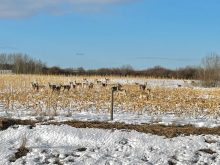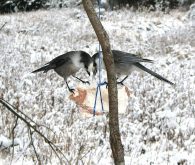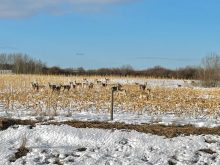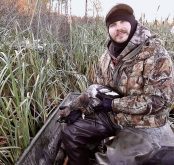There are few solid take-aways yet, but the Livestock Predation Prevention Project (LPPP) — a joint initiative between government and industry to get a more deliberate handle on predation management — has officially hit the pasture.
Potential solutions, such as specialized fencing, are being put to the test on multiple farms across Manitoba, project lead Ray Bittner has said, along with information-gathering technologies such as game cameras or GPS collars, meant to track livestock movements and give a better sense of predator behaviour.
Why it matters: The project hopes to find ways to better understand and limit livestock producers’ losses to hungry predators.
Read Also
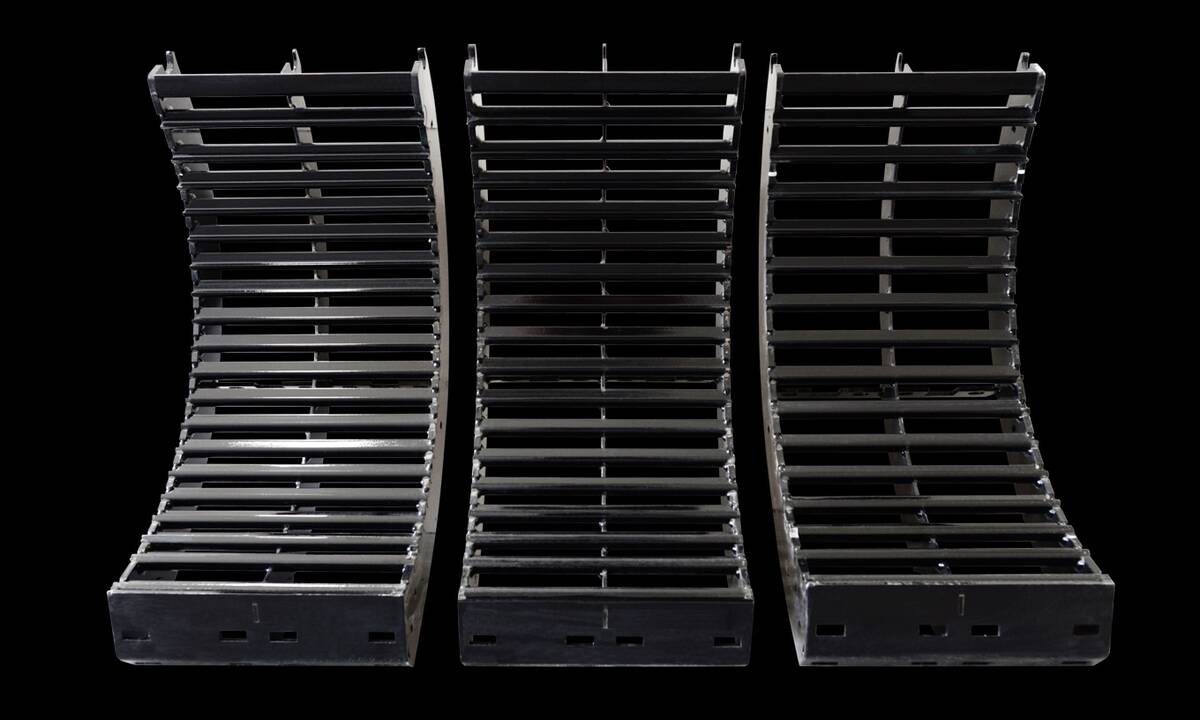
MANITOBA AG DAYS 2026: Stacked equipment category expected at Innovation Showcase
Ten of 28 Innovation Showcase entries at the Manitoba Ag Days 2026 farm show Jan. 20-22 in Brandon are in the equipment category.
The three-year LPPP is the long-awaited result following years of industry push for an in-depth look at predation loss. The project was finally launched in 2020, starting with producer surveys, insurance claim data analysis and research on potential mitigation in an effort to grasp the scope of the problem and possible means to address it.
According to an analysis of data from the Manitoba Agricultural Services Corporation (MASC), producers claimed 7,675 lost beef cattle (mostly calves) and 2,177 sheep (largely split between lambs and ewes) from 2015-19. The agency has reported an average 1,867 cases per year between 2016 and 2020.
- Read more: Predation numbers dip
Bittner noted, however, that those numbers cover only losses where there was enough evidence for a claim.
An LPPP survey launched last year, which asked producers to report both confirmed and suspected losses, saw 550 producers report a total 11,606 animals lost over a period of five years. Of those, coyotes accounted for over 62 per cent of cases, with wolf losses a distant second (almost 23 per cent).
Field tests
The next step of the project saw Bittner reach out to farms chronically plagued with predation issues. Producers were approached about installing potential mitigation measures on their farms, and then monitoring results.
As of mid-October, the LPPP had deployed 57 separate practices with the co-operation of 18 beef and sheep farmers. Among those, producers had opted for four predator-resistant pens, six composting pens (meant to manage deadstock in such a way as to not attract predators), one installation of fladry wire (electric wire hanging with bright flags, meant to temporarily dissuade canine predators), six each of Electronet installations (electric net fencing largely geared for sheep) and fox lights (bright, timed lighting meant to scare off predators). In addition, the project reported 13 game cameras installed and four farms set up with livestock monitoring GPS collars.
There is, however, room for more, according to Bittner.
Drought conditions, which cut deep into herds in some of the very regions typically associated with predation loss, proved to be an obstacle for producers approached by Bittner.
“We got a lot of good feedback that people were interested, but this was such a terrible year for hay production and feed and uncertainty with income levels that we had a lot of people hesitant for that reason,” he said.
“We welcome them back, if they feel that their financial position is better now, but we’re also opening it up to anybody who has some predator issues with cattle or sheep or goats,” he added.
With the exception of the GPS collars, of which all available have been sold, the project is still recruiting producers to try out various practices. The project will, for example, offer up to $300 for a veterinarian consultation — meant to improve herd health and single out vulnerable animals. For other measures, producers can expect to pay anywhere from $164 (the cost to install four fox lights) to $610 (the cost of installing five acres’ worth of fladry wire).
Producers wanting to take part must have had some previous problems with predation, be willing to take the project’s survey to outline their experience and be willing to share any outcomes or improvements they note after watching their chosen mitigation practice in action.




